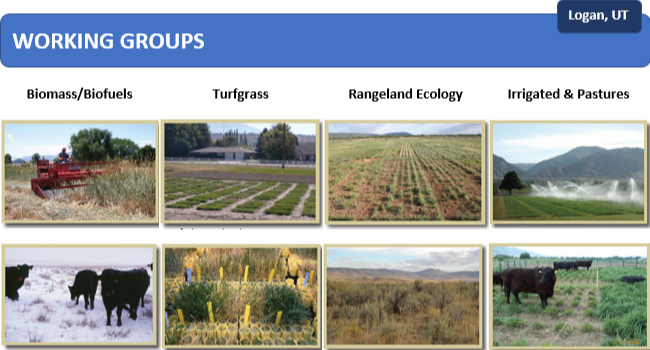Photo Carousel Links
The FRRL is composed of a multidisciplinary team that has developed critically important plant materials presently used on the western U.S. rangelands and pastures. We invite you to learn more about us, how we operate, and our products.
The FRRL mission is to provide improved plant materials and management alternatives for sustainable stewardship of rangelands, pastures, and turf in the western U.S.
Research at the FRRL is accomplished through associations among laboratory scientists and their cooperators, under the broad umbrella of pasture, rangeland, turf, and biomass production. Click the image to the left to visit the Working Groups page and download their respective trifolds.
The primary products of the FRRL are improved plant materials that include grasses, legumes, and forbs. Please click the image to visit the Germplasm Releases page and view the interactive catalog.
Mission
Research is focused on broadening the biodiversity of forage germplasm, developing improved management practices, and providing an array of improved plant materials for enhancing both semi-arid and irrigated private and public lands in the western United States. Specific germplasm improvement projects seek to provide novel plants for conservation, reclamation, recreation, forage production, and sustainable management practices. New genetic combinations, germplasm introductions, and plant selection provide a genetically enhanced gene pool for use in developing new plant materials. Modern methods of biotechnology are used to improve the efficiency of traditional plant breeding efforts. Polymerase chain reaction, AFLP, SSR, and SNP genetic markers, DNA sequencing, and marker assisted selection are used to identify desirable genes such as those imparting increased biomass and forage quality, cold temperature growth, seedling vigor, salt tolerance, and reduced seed dormancy. Management, physiological, and biochemical studies are effected to improve the knowledge base related to water-use efficiency, drought tolerance, cool temperature growth, nitrogen metabolism, and other adaptations that impact seedling vigor and enhanced plant growth in semi-arid environments.




